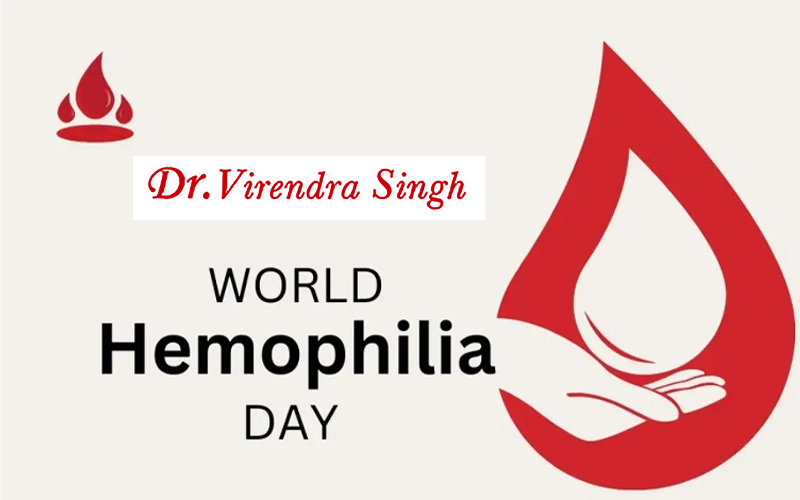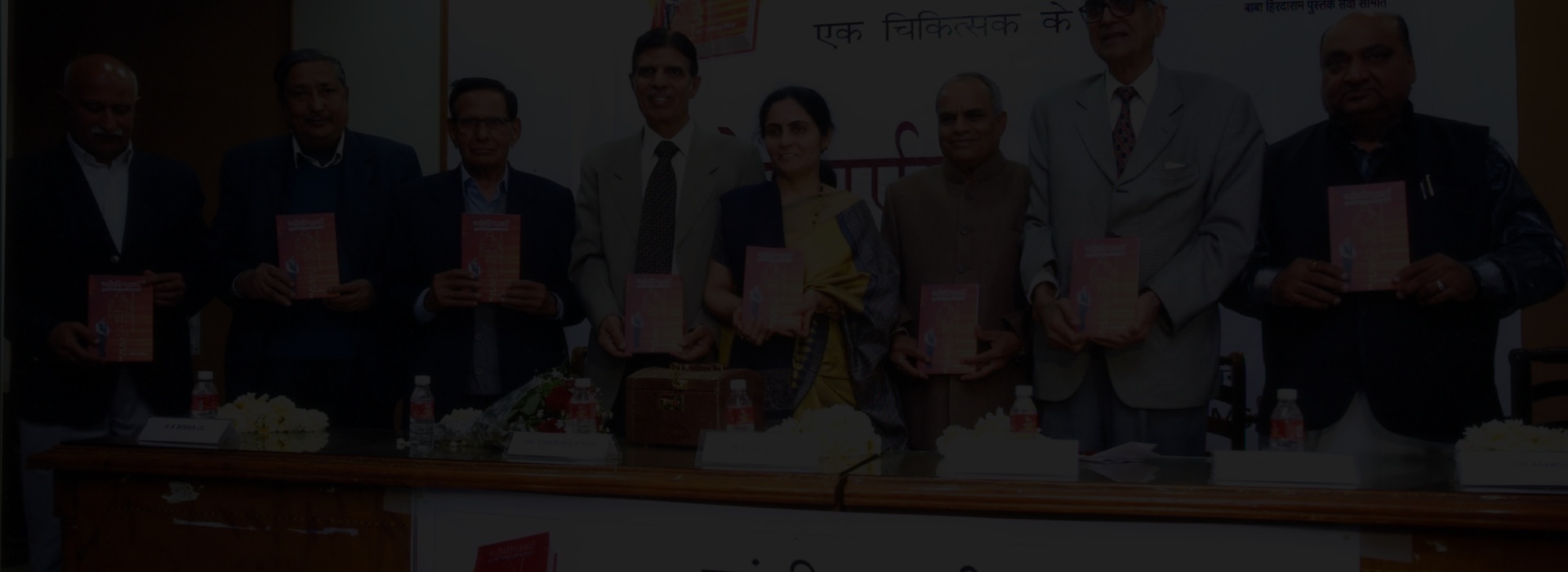
World Hemophilia Day is celebrated every year on April 17. The purpose of the day, which is dedicated to hemophiliacs, is to increase awareness and provide them with a brighter future. Due to a rare disorder called hemophilia, blood does not have enough blood-clotting proteins to clot correctly. World Hemophilia Day is currently celebrated globally to improve diagnosis and access to specialized treatment. The goal of World Hemophilia Day is to unite people worldwide who suffer from bleeding diseases. This significant day marks the birthday of Frank Schnabel, the founder of the World Federation of Hemophilia (WFH), who was born with hemophilia himself.
To enhance the lives of those who suffer from hemophilia and related disorders worldwide, the day promotes activism and education. World Hemophilia Day emphasizes the value of appropriate care, advancements in treatment, and the continuous need for research to develop better solutions and eventually cures for these difficult disorders through community events, educational initiatives, and media outreach.
On World Hemophilia Day, Dr. Virendra Singh offers invaluable guidance and insights to both patients and healthcare professionals. Through his comprehensive guide, he emphasizes the importance of early diagnosis and innovative treatment strategies for managing hemophilia, a condition that affects the blood’s ability to clot properly. In addition to being a ray of hope for individuals who are directly affected by hemophilia, Dr. Virendra Singh guide is a key component of instruction that promotes empathy and understanding in the larger community. Source URL.
The Theme For World Hemophilia Day 2024
The Theme for World Hemophilia Day 2024 is “Equitable Access For All: Recognizing All Bleeding Disorders”. The Theme aims to guarantee that individuals with hemophilia can have the care and assistance they require to lead normal lives.
World Hemophilia Day Timeline
- 1803 (Dr. John Conrad Investigates “Bleeders”): When Philadelphia physician Dr. John Conrad Otto looks into the people he calls “bleeders” in further detail, he finds that it’s a genetic disorder passed down from healthy moms to males.
- 1926 (Von Willebrand Writes a Paper on Hemophilia): A Finnish physician named Dr. Erik von Willebrand describes in a study a condition known as “pseudohemophilia” that affects both men and women equally.
- 1937 (Hemophilia Classified Into Two Categories): In his laboratory, Dr. Alfredo Pavlovsky of Argentina identifies two forms of hemophilia- A and B.
- 1989 (W.F.H Establishes World Hemophilia Day): April 17th has been declared as World Hemophilia Day by the World Federation of Hemophilia in honor of Frank Schnabel, the organization’s founder. Source URL..
History of World Hemophilia Day
The tenth century saw the discovery of hemophilia when medical professionals started to pay attention to patients, especially men, who were bleeding heavily even from relatively slight wounds. It was known as Abulcasis at the time. Unfortunately, due to the limitations of technology at the time, a complete examination of the sickness was not possible. It is believed that many well-known historical personalities, especially those from European royal houses, suffered from hemophilia. They were treated with aspirin, which thinned the hemophiliac’s blood even more, exacerbating the symptoms.
When Philadelphia physician Dr. John Conrad Otto began performing more in-depth research on people he called “bleeders” in 1803, he found that the illness was inherited by boys from healthy moms. In 1926, the Finnish physician Erik von Willebrand described “pseudohemophilia,” a bleeding disorder that affects both men and women equally. The condition was eventually named Von Willebrand Disease after him. In 1957, researchers led by Inga Marie Nilsson at Malmo University Hospital in Sweden determined that low or inadequate levels of Von Willebrand factor were the cause of the condition. Hemophilia was formally classified into two categories in 1937: A and B.
Hemophilia cannot currently be cured, however, it can be managed by routinely injecting clotting factors to reduce bouts of spontaneous bleeding. April 17 was chosen to honor the birthday of Frank Schnabel, the founder of the World Federation of Hemophilia, which founded World Hemophilia Day in 1989. The day’s objectives are to raise funds for those who cannot afford treatment and to raise awareness the illness and other bleeding disorders. Source URL…
How To Observe World Hemophilia Day
- Share Your Story: Post on social media about the impact that genetic bleeding illnesses have had on you or a loved one. Check out what other people are posting and use the hashtag #WorldHemophiliaDay.
- Donate To Hemophilia Research: On this day, you can also remember to visit https://wfh.org. You can donate funds to support this illness’s study.
- Turn on a Red Light: Turn on a red light at your home, place of work, or even a nearby landmark to honor everyone who suffers from a bleeding problem and raise awareness for World Hemophilia Day.
Why World Hemophilia Day is Important
World Hemophilia Day is a very significant event that raises awareness of inherited bleeding disorders, such as hemophilia, which are frequently ignored in the general public’s conversation about health. By recognizing April 17th as a day of awareness, the public, healthcare professionals, and legislators are better informed on the intricacies and requirements related to these disorders.
It fosters a sense of solidarity among those affected, offering them a platform to share their stories, challenges, and triumphs, thereby humanizing the struggle behind the statistics. In addition, advocacy for more access to care, better treatment options, and funding for activities in research toward cures are propelled by this global day of awareness.
- It Helps in Creating Awareness: Lack of knowledge about this uncommon but severe ailment is causing delayed diagnosis. Lack of awareness can increase the death toll.
- It Raises Money For Research: World Hemophilia Day contributes to the money raised for this condition’s research. As a result, we can learn how to manage it better.
- It Helps Show Support to People Affected: People who are affected by hemophilia can connect on World Hemophilia Day. It also makes it possible for the rest of the globe to assist.
5 Interesting Facts About Hemophilia
- It’s Genetic: Hemophilia is a genetic condition inherited from mother to child.
- Hemophilia C is a Milder Form: People with hemophilia C don’t require clotting factor I.V. regularly, and the condition is thought to be less harmful than hemophilia A and hemophilia B.
- Women Infrequently Have Hemophilia: The disease primarily affects men and is extremely uncommon in women to be born with due to the way it is inherited.
- Blood Rests Diagnose it: Factor assays, another name for clotting factor testing, are required to diagnose bleeding disorders and assess the severity of hemophilia.
- The Most Frequent Kind is Hemophilia A: Hemophilia A is the most prevalent type of condition affecting one in every 5, 000 boys, hemophilia B affects one in every 25,000 boys, and hemophilia C affects one in every 100, 000 boys.
FAQs
What is World Hemophilia Day?
World Hemophilia Day is observed on April 17th each year to raise awareness about hemophilia and other genetic bleeding disorders. It is a day to foster understanding in the community and encourage support and better access to care for those affected. The World Federation of Hemophilia’s founder, Frank Schnabel, was born on April 17th, and this date was selected in his honor.
What is the Theme for World Hemophilia Day 2024?
The Theme for World Hemophilia Day 2024 is “Equitable Access For All: Recognizing All Bleeding Disorders”.
Why is World Hemophilia Day important?
The purpose of World Hemophilia Day is to raise awareness of the requirements and difficulties experienced by those who have hemophilia and other hereditary bleeding disorders. It is significant because it aids in the advocacy for improved medical services, cutting-edge therapies, and patient and family support networks. Additionally, it enlightens the public and decision-makers, which may result in more money being allocated for study and better care practices.
How can I participate in World Hemophilia Day?
On World Hemophilia Day, people can take part in local fundraisers or activities, wear red to express support, share information and personal experiences on social media, and educate others about bleeding disorders and hemophilia. Another meaningful approach to help is by donating to organizations that promote patient services and research on hemophilia.
How does Hemophilia affect Daily Life?
Hemophilia can significantly impact daily life, leading to challenges such as joint damage due to bleeding episodes, pain, and mobility issues. It may also have an impact on one’s emotional and mental well-being by raising worries about bleeding risks or stress. However, many who have hemophilia can enjoy active, meaningful lives if they receive the right care and treatment. Medication, physical therapy, and preventive care can all aid in symptom management and the reduction of problems.
Can women have Hemophilia?
While hemophilia is much more common in men, women can also have hemophilia, although they are more often carriers of the gene mutation. Symptoms of bleeding, particularly during surgery, childbirth, or heavy menstruation, may occur in female carriers due to lowered clotting factor levels. Recognition and proper management of hemophilia in women and girls is an important aspect of care.
